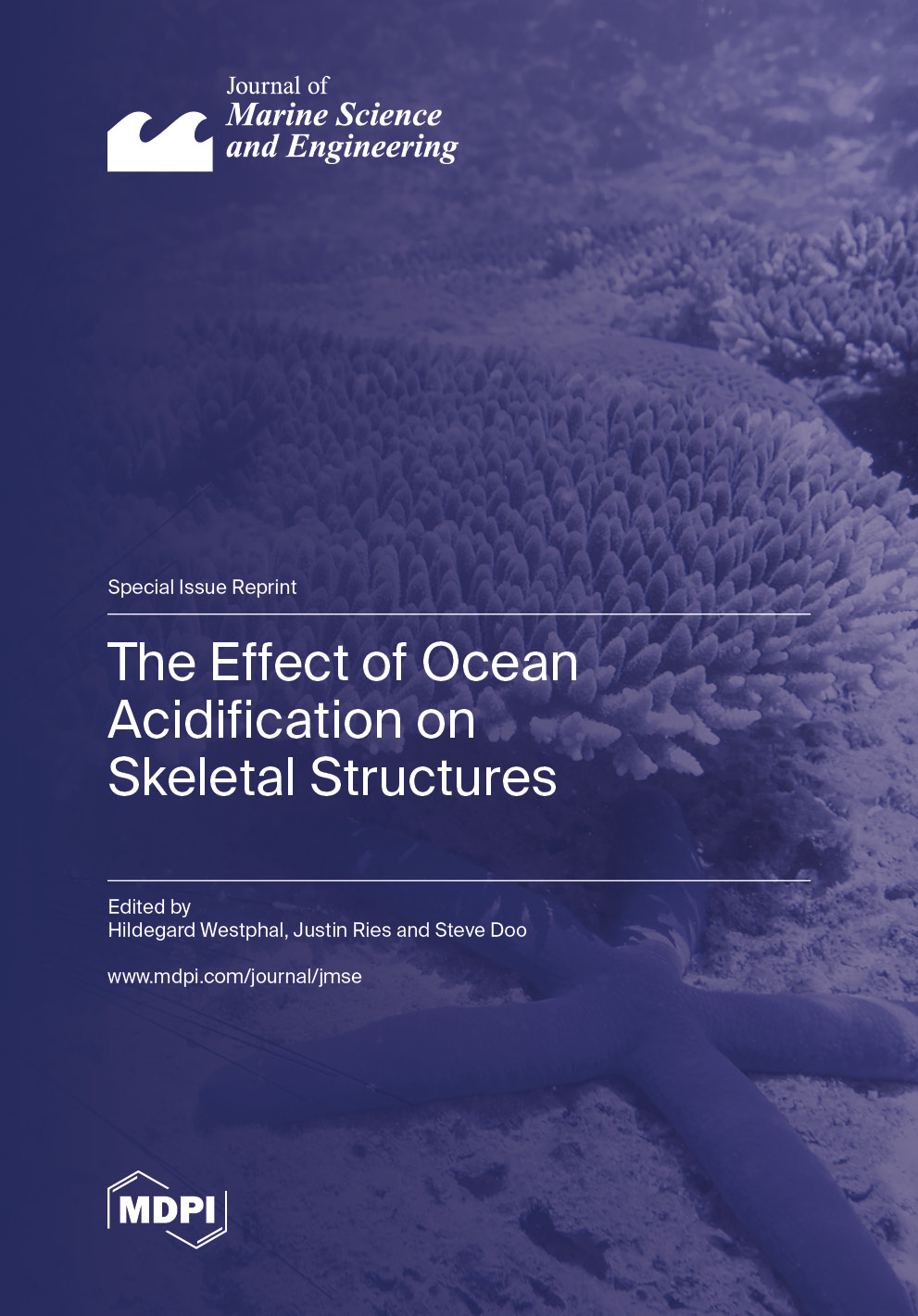18/08/2023 | When CO2 from the atmosphere reacts with seawater to form carbon dioxide, the water’s pH value decreases and so-called ocean acidification (OA) occurs. This process affects calcifying organisms such as corals, mussels or some plankton species and can disturb their ability to build a fully functional calcareous skeleton.
A new scientific book about the “Effect of Ocean Acidification on Skeletal Structures” has recently come out as as special issue reprint edited by ZMT scientists Hildegard Westphal and Steve Doo together with former HWK fellow and ZMT guest researcher Justin Ries from Northeastern University in the US.
The book comprises a collection of articles which present ongoing research into the effects of OA on calcareous biomineralization while introducing some new questions and provocative hypotheses.
The Open Acess publication is available for download here.

About the book:
The increasing partial pressure of atmospheric CO2 (pCO2) is reducing surface ocean pH, a process known as ocean acidification (OA) This results in a reduced saturation of the seawater with respect to the CaCO3 polymorphs aragonite, high-Mg calcite, and low-Mg calcite that are involved in the biological formation of calcareous skeletons and shells.
The effect of OA on calcium carbonate precipitation and the subsequent dissolution in carbonate depositional systems, such as coral reefs, is a hotly debated topic. While early studies suggested that certain carbonate-secreting organism groups may be strongly affected by OA or may even become extinct, others observed highly variable, species-specific responses to OA, whereby some taxa are negatively affected, some are positively affected, and others are unaffected.
The collection of articles presented in this Special Issue presents ongoing research into the effects of OA on calcareous biomineralization while introducing some new questions and provocative hypotheses. The continued investigation of these concepts should advance our understanding of the mechanisms of biocalcification and improve predictions of how future CO2-induced changes in marine and freshwater systems will impact calcifying organisms, as well as the ecosystems they comprise, in the decades and centuries ahead.




